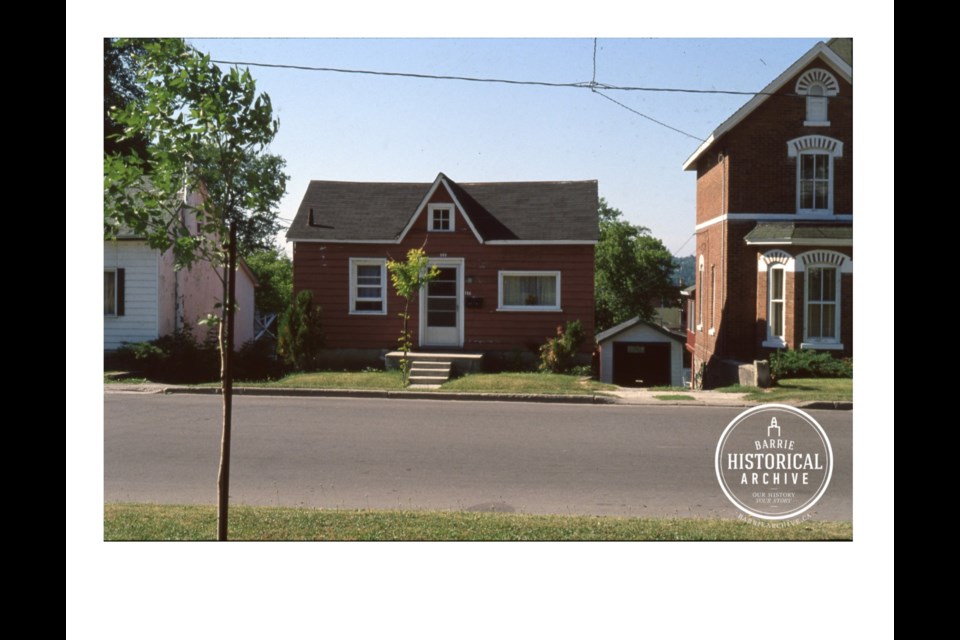Long before the forested slopes on the north side of Kempenfelt Bay became the enclave of fine houses with stunning views of the lake, Andrew Graham took a chance on the fledgling community of Barrie and bought property in the block now surrounded by Poyntz, Dunlop, Sampson and Collier streets.
With only foxes and birds for neighbours, Mr. Graham settled down in this city not yet born and set himself up as a tanner of hides, the first tradesman of that kind in Barrie.
Lot 35, on the south side of Collier Street, was his first purchase. About the same time, Andrew Graham bought Lot 30, which was a water lot. Over time, he acquired more land in the same area including Lots 29, 31 and 36.
Andrew Graham had joined an increasing wave of Irish people leaving difficult conditions in their homeland. In 1830, Graham left County Fermanagh and endured 13 weeks on a wooden sailing ship to get to this country. He was 22 years old.
After arriving in Toronto, Andrew Graham learned all that he could about the tanning trade and then brought that knowledge to Barrie, a hamlet still being carved out of the woods.
Following his move to Barrie, around 1834, Graham wasted no time in diving into business. He built a home for himself, one that amazingly still stands today, on Lot 30 on the north side of Dunlop Street. This timber frame house with its rugged stone foundation is located at 184 Dunlop St. E.
Graham’s home was a multi-purpose building: part private dwelling, part boot and shoe factory, and part shop.
Graham’s success over the next decade allowed him to expand in a big way. In 1850, he had a large tannery built on his water lot just east of Poyntz Street and so became one of the pioneers of manufacturing in this community.
Another decade came and went while Andrew Graham’s fortunes continued to rise.
Around 1860, he upgraded his machinery to the most modern available. With an endless water supply at his back door, Graham installed a powerful steam engine that allowed him to utilize hoppers on rails to move his raw materials and pumps to distribute the liquids necessary for producing leather.
By the mid-1860s, Andrew Graham’s children had reached adulthood and his son, James Graham, who had been working closely with his father, began running an equally modern woollen mill within the tannery. Young Graham offered carding, spinning, weaving, and dyeing services.
Andrew Graham retired from business in 1874, but kept an ever-watchful eye on his legacy from his home across the street, secure in the knowledge that his son was looking after things.
By this time, more services such as the processing of flax had been added to the menu, and Robert Lount had become a partner.
Of course, competition had to come. In fact, Andrew Graham himself had early on been one of the founding businessmen about town who agreed that Barrie needed more mills and processing plants. He signed on to promote the erecting of the flour and grist mill that was eventually built on the site of the present-day bus terminal in 1862.
The first direct competition, a woollen mill on Bradford Street, just south of what was then Elizabeth Street, opened in 1878, after having burned following a brief existence nearby.
In 1881, the bubble burst. Bills began to go unpaid and, by August of that year, the tannery that Andrew Graham built found itself on the auction block. It was sold and resold, passing through the hands of at least four controlling interests over the next two decades.
At least Andrew Graham did not see the fire of June 21, 1900, that destroyed a large part of his former tannery. Mr. Graham had passed away in the spring of 1898, at age 92 years, and was then by far the oldest resident in Barrie. He died in the house that he had built and where he had lived for over 60 years.
The tannery building wasn’t fully lost in the 1900 blaze and parts of it formed a section of the Underhill Shoe Factory that later arose on the spot.



